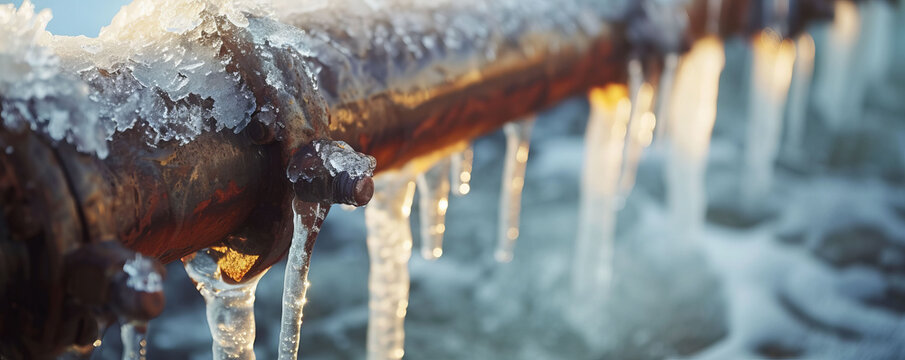Avoiding Frozen Pipes in Cold Weather: Professional Strategies
Avoiding Frozen Pipes in Cold Weather: Professional Strategies
Blog Article
What're your opinions regarding How to prepare your home plumbing for winter weather?

Cold weather can ruin your pipes, especially by freezing pipelines. Right here's how to avoid it from taking place and what to do if it does.
Introduction
As temperatures decrease, the danger of frozen pipelines rises, possibly leading to costly repairs and water damages. Recognizing how to stop icy pipes is vital for property owners in chilly environments.
Understanding Icy Pipes
What triggers pipes to ice up?
Pipes freeze when subjected to temperatures listed below 32 ° F (0 ° C) for prolonged periods. As water inside the pipes freezes, it broadens, taxing the pipeline wall surfaces and potentially creating them to rupture.
Dangers and problems
Frozen pipes can result in water interruptions, building damage, and pricey repair work. Ruptured pipelines can flood homes and trigger considerable structural damage.
Indicators of Frozen Pipes
Identifying frozen pipes early can avoid them from rupturing.
How to recognize frozen pipelines
Seek lowered water circulation from taps, uncommon odors or sounds from pipes, and noticeable frost on exposed pipelines.
Prevention Tips
Shielding vulnerable pipelines
Wrap pipes in insulation sleeves or utilize warmth tape to secure them from freezing temperature levels. Focus on pipes in unheated or external areas of the home.
Heating methods
Maintain indoor rooms adequately heated, specifically areas with plumbing. Open cupboard doors to allow cozy air to distribute around pipelines under sinks.
Securing Outdoor Pipes
Yard hose pipes and exterior faucets
Detach and drain garden tubes before winter season. Mount frost-proof faucets or cover outdoor faucets with insulated caps.
What to Do If Your Pipes Freeze
Immediate actions to take
If you presume frozen pipelines, keep taps open to relieve stress as the ice melts. Utilize a hairdryer or towels taken in hot water to thaw pipes gradually.
Long-Term Solutions
Architectural changes
Take into consideration rerouting pipelines away from exterior wall surfaces or unheated locations. Include additional insulation to attics, cellars, and crawl spaces.
Updating insulation
Buy premium insulation for pipes, attics, and wall surfaces. Correct insulation assists preserve regular temperatures and reduces the risk of icy pipes.
Final thought
Preventing icy pipelines requires positive actions and quick reactions. By recognizing the reasons, indicators, and safety nets, house owners can safeguard their pipes during winter.
Helpful Tips to Prevent Frozen Pipes this Winter
UNDERSTANDING THE BASICS: WHY PIPES FREEZE AND WHY IT’S A PROBLEM
Water freezing inside pipes is common during the winter months, but understanding why pipes freeze, and the potential problems it can cause is crucial in preventing such incidents. This section will delve into the basics of why pipes freeze and the associated problems that may arise.
THE SCIENCE BEHIND FROZEN PIPES
When water reaches freezing temperatures, it undergoes a physical transformation and solidifies into ice. This expansion of water as it freezes is the primary reason pipes can burst. As the water inside the pipe freezes, it expands, creating immense pressure on the walls. If the pressure becomes too great, the pipe can crack or rupture, leading to leaks and water damage.
FACTORS THAT CONTRIBUTE TO PIPE FREEZING
Low Temperatures: Extremely cold weather, especially below freezing, increases the risk of pipes freezing. Uninsulated or Poorly Insulated Pipes: Pipes located in unheated areas, such as basements, crawl spaces, or attics, are more prone to freezing. Insufficient insulation or lack of insulation altogether exacerbates the problem. Exterior Wall Exposure: Pipes running along exterior walls are susceptible to freezing as they encounter colder temperatures outside. Lack of Heating or Temperature Regulation: Inadequate heating or inconsistent temperature control in your home can contribute to frozen pipes. PROBLEMS CAUSED BY FROZEN PIPES
- Pipe Bursting: As mentioned earlier, the expansion of water as it freezes can cause pipes to burst, resulting in significant water damage.
- Water Damage: When pipes burst, it can lead to flooding and water damage to your property, including walls, ceilings, flooring, and personal belongings.
- Structural Damage: Prolonged exposure to water from burst pipes can compromise the structural integrity of your home, leading to costly repairs.
- Mold and Mildew Growth: Excess moisture from water damage can create a favorable environment for mold and mildew growth, posing health risks to occupants.
- Disrupted Water Supply: Frozen pipes can also result in a complete or partial loss of water supply until the issue is resolved.
WHY CERTAIN PIPES ARE MORE PRONE TO FREEZING
- Location: Pipes located in unheated or poorly insulated areas, such as basements, crawl spaces, attics, or exterior walls, are at higher risk of freezing.
- Exterior Pipes: Outdoor pipes, such as those used for irrigation or exposed plumbing, are particularly vulnerable to freezing as they are directly exposed to the elements.
- Supply Lines: Pipes that carry water from the main water supply into your home, including the main water line, are critical to protect as freezing in these lines can affect your entire plumbing system.
- Underground Pipes: Pipes buried underground, such as those connected to sprinkler systems or outdoor faucets, can be susceptible to freezing if not properly insulated.
https://busybusy.com/blog/helpful-tips-to-prevent-frozen-pipes-this-winter/

We are very drawn to Prevent Frozen Pipes and I'm hoping you enjoyed the page. If you enjoyed reading our blog posting kindly consider to share it. Thanks a bunch for being here. Revisit us soon.
Call Today Report this page